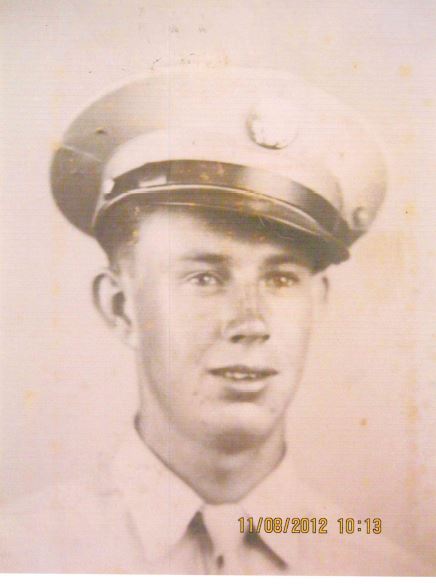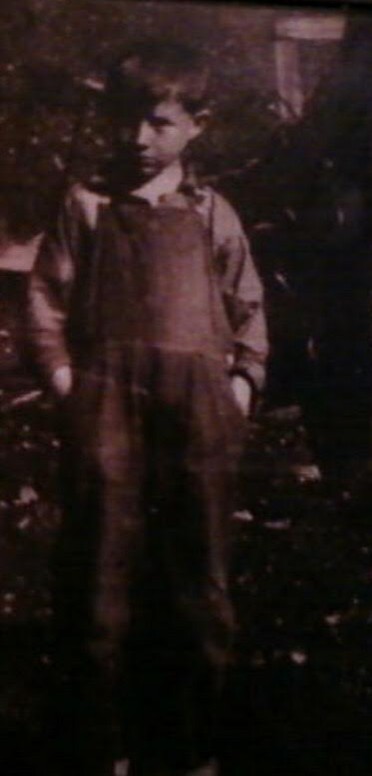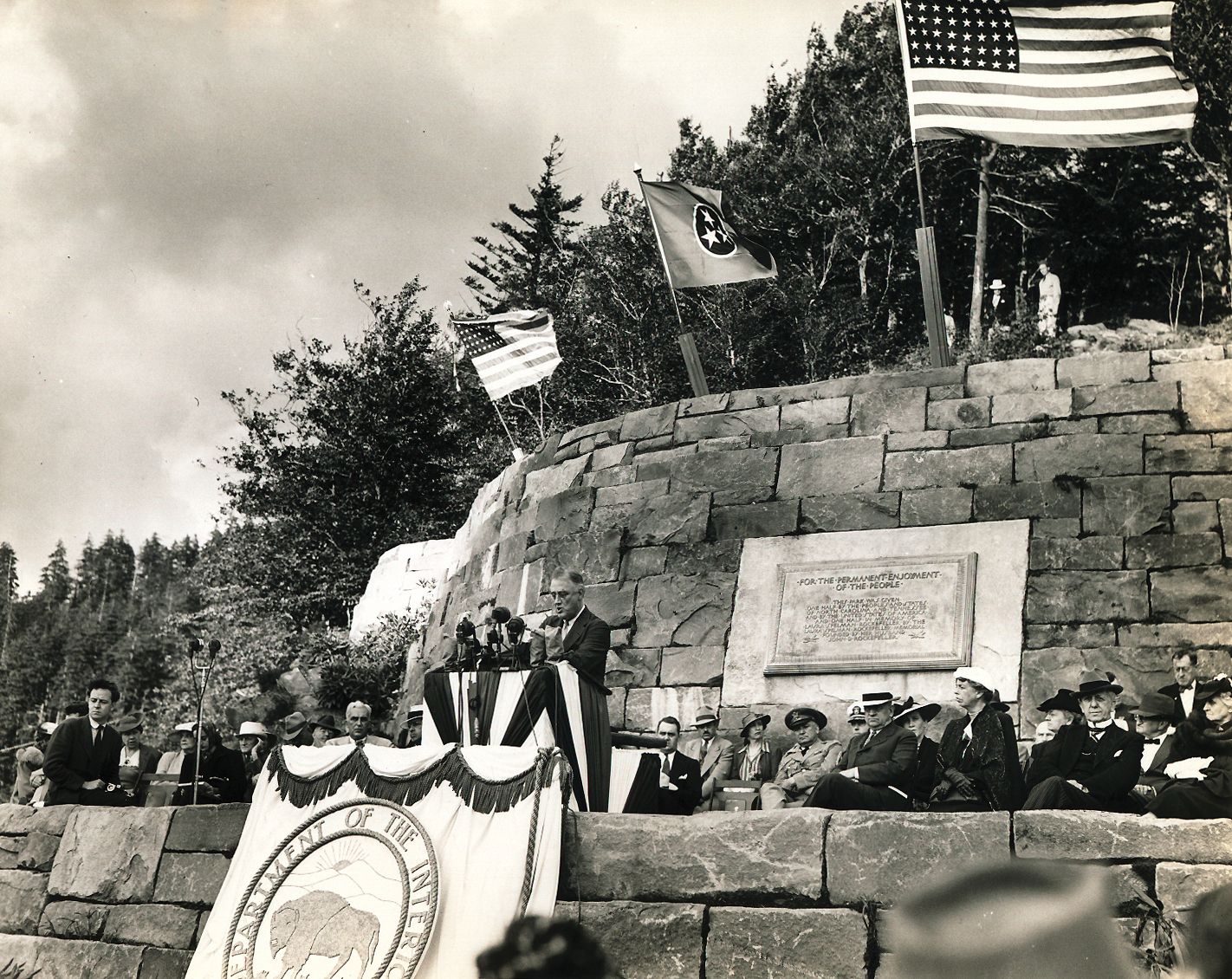Private First Class Glenn H. Henry

- Unit: 66th Infantry Division, 262nd Infantry Regiment, Company E
- Service Number: 34990134
- Date of Birth: January 19, 1926
- Date of Death: December 25, 1944
- Hometown: Sevierville, Tennessee
- Place of Death: English Channel
- Award(s): Purple Heart
- Cemetery: Tablets of the Missing. Normandy American Cemetery, Colleville-sur-Mer, France
Mentored by Ms. Rebecca Byrd
Sevier County High School
2017-2018
Early Life
Private First Class Glenn Henry was born in the shadow of the Great Smoky Mountains in Tennessee in 1926. Glenn attended Williamsburg School but, like many young people during the Great Depression, left school early to help his family on the farm by raising crops and caring for livestock. Life on a mountain farm in east Tennessee was tough. As the eldest son, Glenn cut firewood, carried water, and plowed fields to help provide for his younger siblings.
Glenn’s youngest brother Lonnie remembered several stories of Glenn playing on the farm with his brothers and sisters who idolized their eldest brother. Glenn’s family described him as “small, quiet, and a friend to everybody.”


Homefront
East Tennessee was a very rural area. Most people worked on farms, primarily corn and tobacco farms. The opening of Great Smoky Mountains National Park in 1940 increased tourism, which stimulated the economy.
In 1942, the government began acquiring land in Anderson and Roane counties to build a top secret facility for enriching uranium. Many young women in East Tennessee found work in the “secret city” of Oak Ridge. They would not find out the true purpose of their work until the atomic bomb was dropped on Hiroshima in 1945.
In close proximity to Sevierville, Douglas Dam was created on March 1, 1943. This dam’s main purpose was to produce power for the war effort. Specifically, it supplied power to make aluminum for aircraft. Those who worked on the dam believed that it was an important component for the war effort. One employee Patrick Marshall said of Douglas Dam, “We are all united in the hope that this power will speed utter defeat to our enemies.”

Military Experience
Henry was drafted into the 66th Infantry Division, 262nd Infantry Regiment, Company E in 1944. He reported to Camp Shelby, Mississippi. His basic training was in Camp Blanding, Florida. He then reported to Camp Rucker, Alabama, for embarkation to England. He stayed in Southampton where he and his division waited to be transported to Cherbourg.
His division boarded the Belgian ships the HMS Cheshire and the SS Leopoldville on December 24, 1944. Henry was on the SS Leopoldville. As the ships traveled across the English Channel, a German U-Boat fired a torpedo at the Leopoldville. As the ship sank, the soldiers had to decide whether to jump or to stay.
Henry chose to stay on since he could not swim. Another Sevier County soldier, L. V. Flynn, described pleading with him: “I begged and begged Henry to jump. But he just wouldn’t. I think he might have thought a British ship would return and that he stood a better chance staying on.” In total, 763 soldiers died and 493 bodies were never recovered. Henry was one of the 493 men lost to the sea.
In the aftermath of the sinking, American and British governments investigated the tragedy and interviewed the survivors. The reports revealed that the Belgian crew left the ship without helping the soldiers aboard. Sergeant Frederick J. Perkins said in his report, “If we had been on an American ship and had an American crew every man that got out of a compartment would have been saved.”
The findings of the investigations led to a coverup by the government. Files were classified and families were only given partial information about their sons’ deaths, including the family of Private Henry. It was not until 1958 that the files were declassified and the public learned what happened. The men who died on the Leopoldville are memorialized on the Wall of the Missing at Normandy American Cemetery. These men are also memorialized on the 66th Infantry Division Memorial in Fort Benning, Georgia, which was dedicated in 1997.
Eulogy
Private First Class Glenn Henry was born in east Tennessee to Wylie and Sarah Henry. In his youth, he worked on the family farm. Along with working on the farm, Private Henry was a caring brother. He was particularly close to his younger brother Ray who was said to have hero-worshipped Private Henry.
In 1944, at the age of 18, Private Henry was drafted into the 66th Infantry Division, 262nd Infantry Regiment. In late 1944, Private Henry’s regiment was sent to England where the soldiers prepared to fight in the final phase of the war. On December 24, 1944, the 66th Infantry Division boarded the HMS Cheshire and the SS Leopoldville to cross the English Channel escorted by the HMS Brilliant.
The ships were warned of German U-Boat activity in the waters. However, given that it was Christmas Eve, the crew was less vigilant. As the ships were traveling, a German U-Boat fired a torpedo at the SS Leopoldville, the ship Private Henry was aboard. Private Henry chose to wait on the ship for help. His body was never recovered.
On Christmas morning, Wylie and Sarah Henry learned that their son was missing in action, being told later he was dead. Private Henry’s story was almost lost to history, to be forgotten along with the tragedy that took his life. But Private Henry was remembered by his family who continue to keep his memory alive by passing down stories of his life, talking fondly of him. Even in death Private Henry continued to help his family through the money they received in pension.
Private Glenn Henry may appear to most to be an average soldier, but to those who knew him, he was a hero.
Reflection
The Normandy: Sacrifice for Freedom® Student and Teacher Institute changed my perception of war forever by making it more personal for me than it ever was before.
In school, World War II is taught only in terms of the politics, major battles, and statistics of casualties. No attention is ever brought to the experience and the sacrifice of the common soldier. This program allowed me to see the personal and deeper effect that war has and learn the more intimate story of a soldier. Being able to learn about my Silent Hero, Private Glenn Henry, gave me a deeper understanding of what sacrifice truly is, something a lesson in class would have never taught me.
Looking over the Normandy American Cemetery and seeing all the gravestones and seeing Omaha Beach right below it was something I will never forget. It was an emotional experience to stand on the beach and think about how many soldiers risked everything for freedom not just for themselves, but for the world. I will take the lessons I have learned here and remember them for the rest of my life and share what I have learned with others.
Bibliography
Primary Sources
66th Infantry Division; World War II Operations Reports, 1940-48, Records of the Adjutant General’s Office, Record Group 407 (Box 9580); National Archives at College Park, College Park, MD.
Dept. of Conservation Photograph Collection, Box 34, File 126, Tennessee State Library and Archives.
Dumas, Jim. “Sevier County Soldier Survived Frightening Ordeal on Land and Sea.” Smoky Mountain Press (Sevierville, TN).
Glenn H. Henry, Individual Deceased Personnel File, Department of the Army.
Glenn H. Henry, Official Military Personnel File, Department of the Army, RG 319, National Archives and Records Administration – St. Louis.
Henry Family Photographs. 1930s-1940s. Courtesy of Lonnie Henry.
Henry, Lonnie. Interview by the author. April 24, 2018.
HMS Brilliant. Photograph. October 1942. National Archives and Records Administration (76793). Image.
Tennessee. Sevier County. 1930 U.S. Federal Census. Digital Images. ancestry.com.
Tennessee. Sevier County. 1940 U.S. Federal Census. Digital Images. ancestry.com.
Secondary Sources
Allen, Tonya. “The Sinking of SS Leopoldville.” uboat.net. uboat.net/history/leopoldville.htm.
Andrade, Allan. Leopoldville: A Tragedy Too Long Held Secret. N.p.: Xlibris, 2009.
Byrd, Rebecca. “Supporting and Tempering Distant Forces: The World War II Experience of Chestnut Hill, Tennessee.” The Journal of East Tennessee History 85 (2013): 70-89.
Coons, Phillip M. “History of the 66th Division.” 66th Division. Accessed August 24, 2018. www.66thinfantrydivision.org/history-of-66th.html.
“Glenn H. Henry.” American Battle Monuments Commission. Accessed August 24, 2018. www.abmc.gov/node/409597#.WxhE_-4vyUl.
Spiner, Emily. “How the U.S. Created a ‘Secret City’ in Oak Ridge to Build the Atomic Bomb, 75 Years Ago.” Nashville Public Radio. Accessed August 24, 2018. nashvillepublicradio.org/post/how-us-created-secret-city-oak-ridge-build-atomic-bomb-75-years-ago#stream/0.
Tennessee Valley Authority. “What Democracy Can Do.” Tennessee Valley Authority. Accessed August 24, 2018. www.tva.gov/About-TVA/Our-History/Built-for-the-People/What-Democracy-Can-Do.

